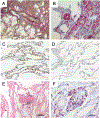Group 3 Pulmonary Hypertension: From Bench to Bedside
- PMID: 35482836
- PMCID: PMC9060386
- DOI: 10.1161/CIRCRESAHA.121.319970
Group 3 Pulmonary Hypertension: From Bench to Bedside
Abstract
Pulmonary hypertension (PH) because of chronic lung disease is categorized as Group 3 PH in the most recent classification system. Prevalence of these diseases is increasing over time, creating a growing need for effective therapeutic options. Recent approval of the first pulmonary arterial hypertension therapy for the treatment of Group 3 PH related to interstitial lung disease represents an encouraging advancement. This review focuses on molecular mechanisms contributing to pulmonary vasculopathy in chronic hypoxia, the pathology and epidemiology of Group 3 PH, the right ventricular dysfunction observed in this population and clinical trial data that inform the use of pulmonary vasodilators in Group 3 PH.
Keywords: hypertension, pulmonary; hypoxia; lung diseases, interstitial; prevalence; ventricular dysfunction, right.
Figures



References
-
- Chen L, Einbinder E, Zhang Q, Hasday J, Balke CW and Scharf SM. Oxidative stress and left ventricular function with chronic intermittent hypoxia in rats. American journal of respiratory and critical care medicine. 2005;172:915–920. - PubMed
-
- Silverman NA, Kohler J, Levitsky S, Pavel DG, Fang RB and Feinberg H. Chronic hypoxemia depresses global ventricular function and predisposes to the depletion of high-energy phosphates during cardioplegic arrest: implications for surgical repair of cyanotic congenital heart defects. The Annals of thoracic surgery. 1984;37:304–308. - PubMed
Publication types
MeSH terms
Substances
Grants and funding
LinkOut - more resources
Full Text Sources
Medical

